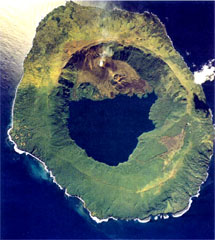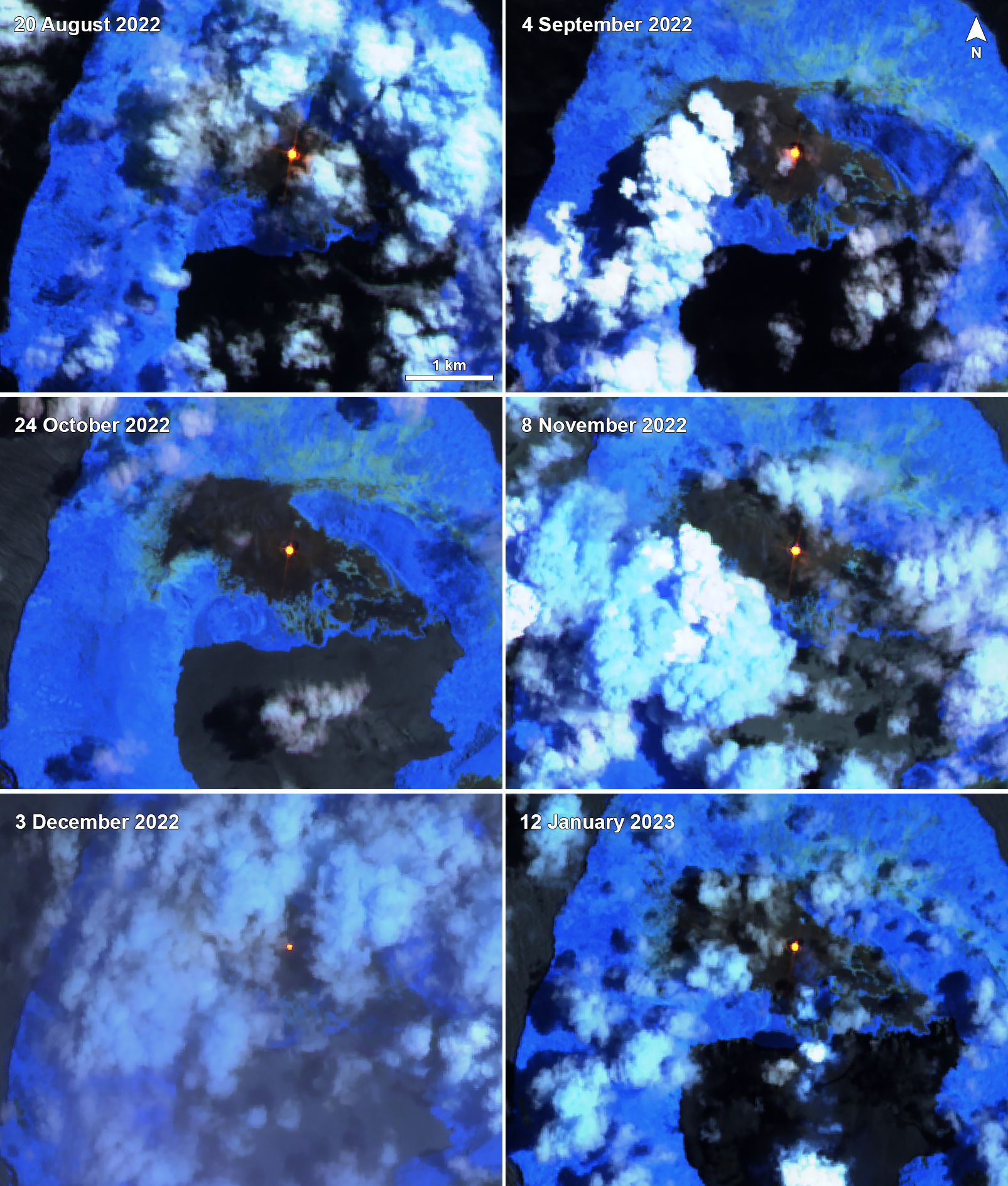Report on Tofua (Tonga) — February 2023
Bulletin of the Global Volcanism Network, vol. 48, no. 2 (February 2023)
Managing Editor: Benjamin Andrews.
Edited by Kadie L. Bennis.
Tofua (Tonga) Intermittent thermal anomalies in the Lofia crater during August 2022-January 2023
Please cite this report as:
Global Volcanism Program, 2023. Report on Tofua (Tonga) (Bennis, K.L., and Andrews, B., eds.). Bulletin of the Global Volcanism Network, 48:2. Smithsonian Institution.
Tofua
Tonga
19.75°S, 175.07°W; summit elev. 515 m
All times are local (unless otherwise noted)
Tofua Island in the central part of the Tonga Islands group is the emergent summit of a large stratovolcano. Its summit contains a 5-km-wide caldera. Three post-caldera cones were constructed at the northern end of a caldera lake. The easternmost cone has three craters that produced lava flows, some of which have traveled into the caldera lake. The largest and northernmost of the cones, Lofia, has been the source of previous eruptions dating back to the 18th century. The current eruption period began in October 2015 and has more recently consisted of intermittent thermal anomalies in the Lofia crater (BGVN 47:08). This report covers continued thermal activity in the Lofia crater during August 2022 through January 2023 using information primarily from satellite data.
Intermittent hotspots were detected by Sentinel-2 infrared satellite imagery, the MODVOLC infrared satellite data using NASA’s MODIS instrument, and Suomi NPP/VIIRS sensor data (figure 17). Sentinel-2 imagery showed a bright thermal anomaly in the Lofia crater 1-5 times each month during the reporting period, though some days the summit was not visible due to cloudy weather (figure 18). A total of four thermal alerts were detected by the MODVOLC system on 12 August 2022, 18 September, and 2 and 18 January 2023. There was a total of 46 days of hotspots during the reporting period that ranged from 4-10 each month in Suomi NPP/VIIRS data.
Geological Summary. The low, forested Tofua Island in the central part of the Tonga Islands group is the emergent summit of a large stratovolcano that was seen in eruption by Captain Cook in 1774. The summit contains a 5-km-wide caldera whose walls drop steeply about 500 m. Three post-caldera cones were constructed at the northern end of a cold fresh-water caldera lake, whose surface lies only 30 m above sea level. The easternmost cone has three craters and produced young basaltic andesite lava flows, some of which traveled into the caldera lake. The largest and northernmost of the cones, Lofia, has a steep-sided crater that is 70 m wide and 120 m deep and has been the source of historical eruptions, first reported in the 18th century. The fumarolically active crater of Lofia has a flat floor formed by a ponded lava flow.
Information Contacts: MIROVA (Middle InfraRed Observation of Volcanic Activity), a collaborative project between the Universities of Turin and Florence (Italy) supported by the Centre for Volcanic Risk of the Italian Civil Protection Department (URL: http://www.mirovaweb.it/); Hawai'i Institute of Geophysics and Planetology (HIGP) - MODVOLC Thermal Alerts System, School of Ocean and Earth Science and Technology (SOEST), Univ. of Hawai'i, 2525 Correa Road, Honolulu, HI 96822, USA (URL: http://modis.higp.hawaii.edu/); NASA Worldview (URL: https://worldview.earthdata.nasa.gov/); Sentinel Hub Playground (URL: https://www.sentinel-hub.com/explore/sentinel-playground).



